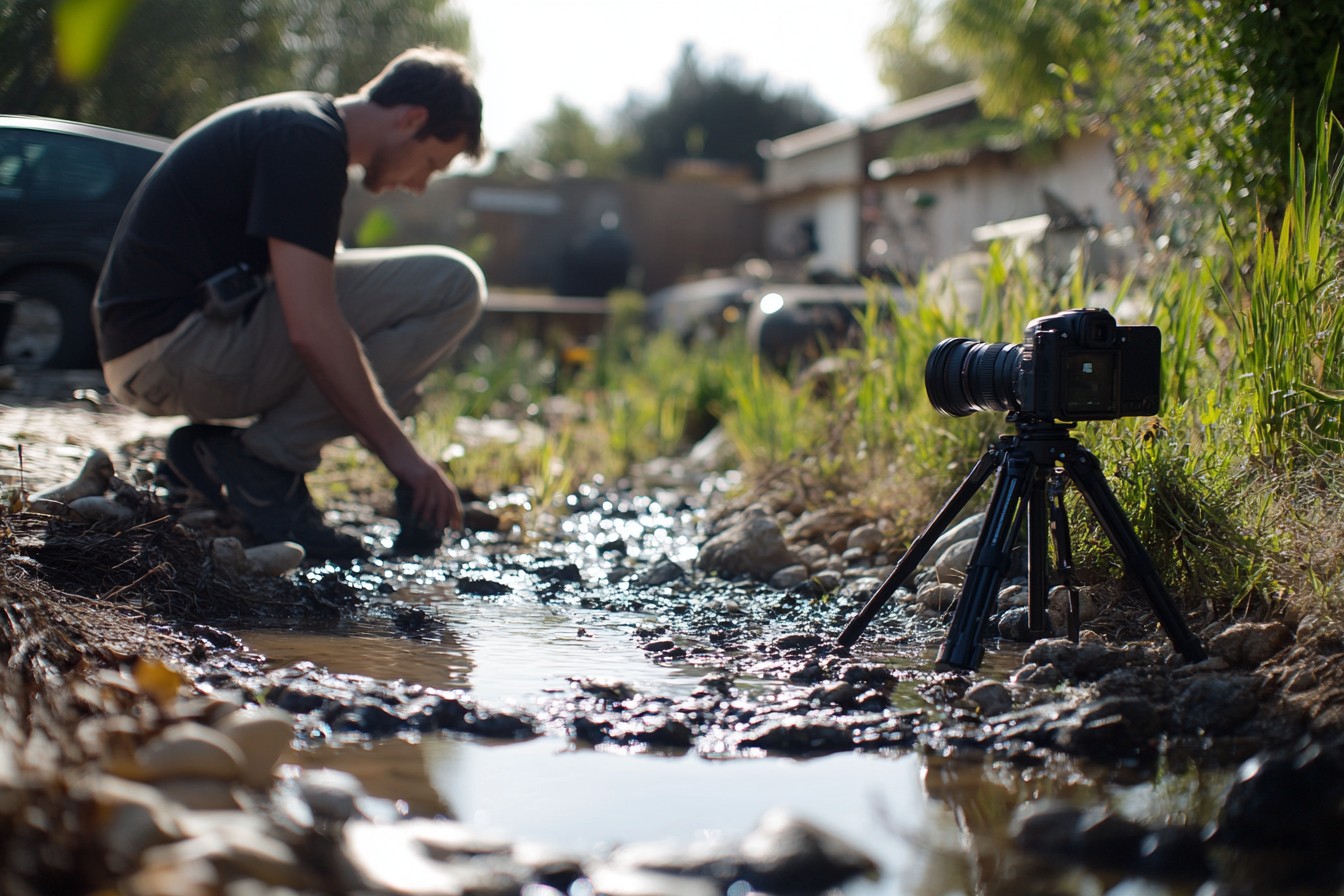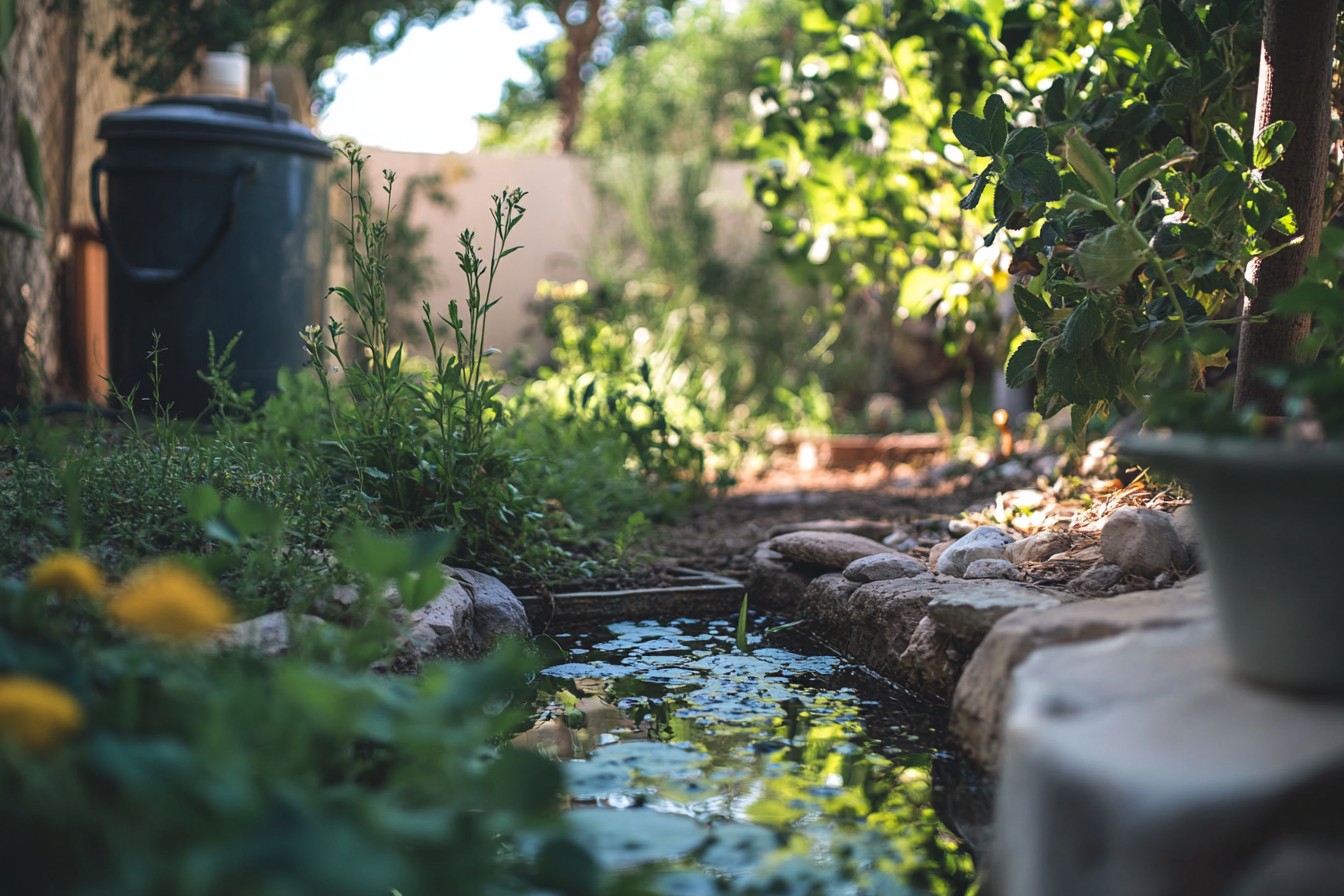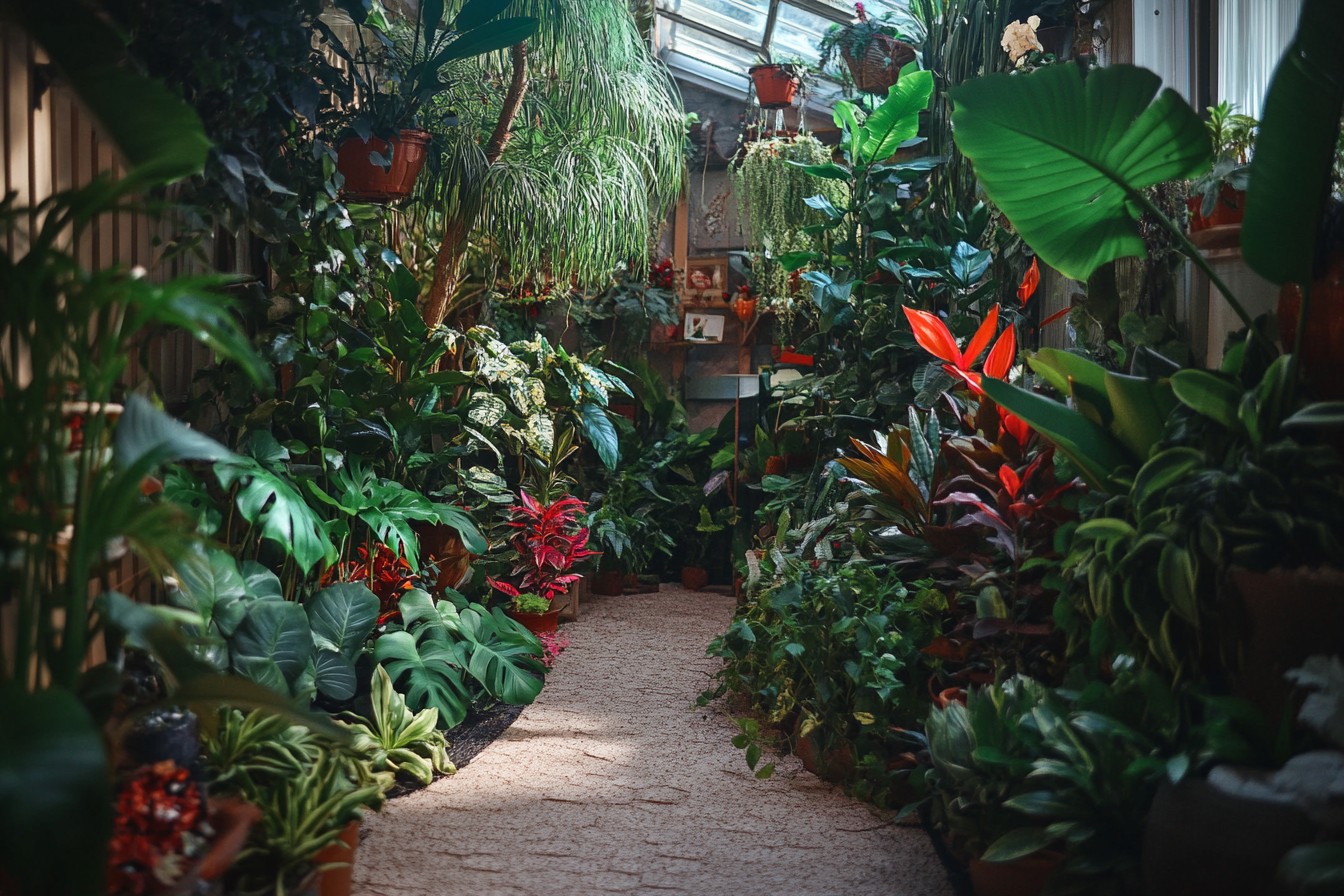I never meant to become the kind of person who creates “documentation packages.” That phrase alone sounds like something from my corporate past—the world of three-ring binders and soul-crushing meetings I’d escaped years ago. Yet here I was on a Tuesday night, surrounded by hand-drawn diagrams, component spec sheets, and a half-empty bottle of reasonably priced Merlot, creating exactly that for my backyard greywater system. Life comes at you fast, I guess.
It all started when my neighbor Rob caught me crawling around my yard with a flashlight at 10 PM, searching for a specific junction in my greywater piping. “Dude, what are you doing?” he asked, coffee mug in hand, looking appropriately concerned about the grown man army-crawling through mulch in the dark. “I’m trying to find where the shower line connects to the main distribution pipe,” I explained, as if this were a completely normal evening activity.
“I think it might be clogged with hair or something. The flower bed isn’t getting enough water.”
Rob took a slow sip of his coffee. “You don’t have that mapped out somewhere?”
The question hit me like a ton of bricks.
Of course I didn’t have it mapped out. I’d installed the system over three weekends last spring, making adjustments on the fly, confident that I’d remember every detail of my brilliantly designed water-recycling masterpiece. Narrator voice: He did not, in fact, remember every detail.
That night, after finally locating the junction (it was under the rosemary bush, not the lavender as I’d convinced myself), I sat at my kitchen table and realized how ridiculous my situation was. I had spent months researching, designing, and installing an elaborate system to divert water from my shower, washing machine, and bathroom sink into various parts of my garden. I’d calculated flow rates, researched compatible soaps, installed filters, and created branching distribution channels—all without documenting a single thing.
What would happen if I moved? Or needed major repairs? Or just continued to be a human with normal memory limitations?
The entire system would become a mysterious network of pipes leading to unknown destinations, like some kind of suburban archaeological puzzle for the next homeowner to solve. The documentation project began the next day. I started with a basic sketch of my property, measuring actual distances with a tape measure like a proper adult.
My first attempt looked like something a talented five-year-old might draw—all wobbly lines and questionable proportions. After three increasingly frustrated attempts, I broke down and bought a digital drawing tablet. Technology 1, Hand-Eye Coordination 0.
The system map gradually took shape over the following week. I traced the path of every pipe, measuring depths and distances with embarrassing precision. I crawled back under bushes, dug small investigative holes, and at one point, rigged up a contraption involving my phone’s camera duct-taped to a selfie stick to peer into a particularly inaccessible junction.
(This last technique yielded blurry, useless photos and one dropped phone, which I do not recommend.)
With the physical layout mapped, I moved on to documenting components. This meant digging through my email for old order confirmations, searching recycling bins for product packaging I might have kept, and in some cases, actually digging up parts of the system to check brand names. Turns out my “I’ll definitely remember what kind of filter I used” confidence was wildly misplaced.
I had no idea what kind of filter I’d used. I created detailed specification sheets for each component: the washing machine diverter valve, the shower drain heat recovery system, the three different types of filters, the distribution manifold, and even the specific pipe materials used in different sections. For each one, I included model numbers, purchase dates, manufacturer websites, and any warranty information I could find.
I also added photos of each component as installed in my system—a touch I felt quite smug about until I realized half the photos were too dark or blurry to be useful, requiring a second photography session. The maintenance schedule was next, and perhaps the most humbling part of the whole endeavor. I had to admit to myself that I’d been maintaining my system based on a combination of crisis response, vague memories of installation manuals, and what can only be described as vibes.
When should the shower filter be cleaned? When it occurred to me to look at it, apparently. How often should the distribution lines be flushed?
When plants started looking sad. Not exactly the systematic approach I’d prided myself on. I researched manufacturer recommendations for each component and created a comprehensive maintenance calendar.
Weekly tasks included checking for leaks and monitoring water flow to different zones. Monthly jobs involved cleaning accessible filters and checking for any signs of soap buildup. Quarterly maintenance meant flushing the entire system, cleaning all filters thoroughly, and inspecting every visible component for wear.
And annually, I scheduled a complete system review, including soil health assessment in each irrigated zone and component replacement as needed. This schedule existed in stark, judgmental contrast to my actual maintenance history, which could be summarized as “sometimes notices things and fixes them, usually after some portion of the garden looks distressed.” I silently promised my greywater system that I would do better going forward, fully aware I was making commitments to inanimate pipes. The troubleshooting guide was born from painful experience.
Over the year and a half my system had been operational, I’d encountered a variety of issues: reduced water flow, uneven distribution, soap buildup, filter clogs, mysterious gurgling sounds, and once, a briefly alarming situation where the shower appeared to be draining directly into my herb garden much faster than the system design intended (turned out a pipe had simply come loose, but the temporary swamp it created was impressive). For each problem I’d faced, I documented the symptoms, potential causes, diagnostic steps, and solutions. For issues I hadn’t yet encountered but had read about, I included theoretical troubleshooting approaches.
I felt like I was creating a Choose Your Own Adventure book, except every adventure involved pipes, water, and varying levels of yard digging. “Why are you going this deep?” Lisa asked when she visited and found me photographing filter components laid out on a white towel like I was creating a catalog. My sister had always been the practical one in the family.
“Just draw a basic map and write down what parts you used.”
I tried explaining that this wasn’t just about current maintenance—it was about knowledge transfer and home value. The term “knowledge transfer” made her roll her eyes so hard I was briefly concerned for her ocular health. But it was true.
I’d spent countless hours learning this system through trial and error. The documentation package wasn’t just a record—it was the distillation of all that hard-won knowledge, packaged in a way that anyone could understand and use. If I ever sold my house, this documentation would transform my greywater system from a potential liability (“What are all these pipes doing?”) into an asset (“Here’s a complete guide to your water-saving, garden-irrigating system”).
The final piece was adding seasonal adjustments. Living in a climate with distinct seasons meant the system needed different configurations throughout the year. In summer, all bathroom greywater was directed to the garden zones.
In winter, most was diverted back to the sewer to prevent freezing issues, with only a small amount feeding indoor planters and the temperature-controlled greenhouse cabinet I’d built along the south wall of my kitchen. I created seasonal transition checklists for spring and fall, detailing which valves should be turned, which zones activated or deactivated, and what maintenance should be performed during these transitions. These checklists were laminated—yes, actually laminated, with a small machine I bought specifically for this purpose—and attached to the main control panel in my utility room.
I was becoming a documentation monster, and I couldn’t stop myself. Three weeks after Rob’s innocent question, I had created a 27-page documentation package for my greywater system. It included:
– A master system map showing all components and water flow paths
– Detailed zone maps for each irrigated area
– Component specifications with photos and warranty information
– Seasonal configuration guides
– The comprehensive maintenance schedule
– A troubleshooting decision tree
– Water quality monitoring guidelines
– A list of approved soaps and cleaning products
– Emergency shutdown procedures
– A running log for system changes and maintenance performed
I bound it all in a waterproof binder, made three copies (one for the utility room, one for my office, and one digital backup), and felt a satisfaction so pure it was almost embarrassing.
I’d created the documentation equivalent of a handcrafted watch—intricate, possibly excessive, but undeniably functional. The real validation came six months later when my washing machine died spectacularly, requiring replacement. Instead of the usual panicked research and guesswork about compatibility with my greywater system, I simply opened my documentation package to the appliance section.
There I found detailed specifications on flow rates, connection types, and compatible models. Purchasing a replacement took 20 minutes instead of several stressed-out days. Even better was the reaction from my home insurance agent when I mentioned the system during a policy review.
Initially concerned about potential water damage, her tone changed completely when I offered to send her the documentation package. “This is incredible,” she said after reviewing it. “I’ve never seen a home system documented this thoroughly.” The resulting policy adjustment actually saved me money, as the perceived risk decreased substantially.
So yes, I became the documentation guy—something my corporate-escaping self would have mocked mercilessly just a few years earlier. But there’s something deeply satisfying about truly understanding a system you’ve built, mapping its intricacies, and creating a resource that transforms complexity into clarity. Plus, I haven’t had to army-crawl through my garden with a flashlight since, which my knees appreciate and my neighbors no longer have to explain to their children.
If you’re running any kind of system—greywater, irrigation, hydroponics, whatever—take it from someone who learned the hard way: document as you build, not months later when you’re questioning every decision and connection you’ve made. Your future self will thank you, probably while staying clean and dry instead of digging up the yard at twilight, wondering where exactly that pipe goes and why it made that ominous gurgling sound.









